Using grants to fund a classroom set of calculators can be an intimidating task. For those looking to submit a grant proposal, we’ve split the grant writing process into three parts. If you have not yet read the previous posts, please check them out! This pathway was created linearly to build your knowledge up as you read. You’re at the final stop!
- An Introduction to Educational Grants
- Preparing to Write your Grant Proposal for Calculators
- Writing and Formatting your Grant Proposal for Calculators (You are here!)
Let’s start writing your proposal.
Now that you’ve gathered your data, obtained support or permission, and have your project planned out and ready to go, it’s time to start writing and formatting your proposal. We will review each typical section included in a proposal, outline the goals of each section, specify the key questions to address in each, and provide sample responses. Some questions may overlap across sections. Remember that each section can stand alone. If a reviewer only sees one section, they should be able to grasp your entire project. This advice serves as a general guide; ensure you adhere to the funding agency's criteria, which may stipulate section titles and require specific information or answers to certain questions.
Abstract
This section may also be referred to as the Description or Overview. To write an effective abstract, start by fully developing your proposal to grasp all its aspects in detail. Then, distill the most critical points into this section. We recommend writing this section last.
- Who will benefit from this grant if awarded?
- Example: Pre-calculus students in X School District will be supplied with Texas Instruments graphing calculators that will help improve their academic success throughout the school year.
- What problems are your students facing?
- Example: Based on census data, our students’ families do not possess the financial ability to purchase calculators on their own. Students risk academically falling behind their peers without access to this technology.
- Based on research, how will completing this project or providing these materials help students?
- Example: Based on Texas Instruments’ research, students with access to graphing calculators during classroom instruction perform better when compared to students without access to graphing calculators.
- What is your intent?
- Example: The awarded funds will be used to purchase a classroom set of graphing calculators for pre-calculus students to use as an aid during instruction.
- What idea are you proposing?
- Example: Based on research, providing calculators as a learning aid for math students will help them succeed. I plan on using the provided graphing calculators to help pre-calculus students visualize the math concepts being taught.
- What is the total amount that you are requesting?
- Example: I will need $4,154.85 to purchase a classroom set of 30 Ti-84 Plus CE graphing calculators from Underwood Distributing Co.
Statement of Need
Detail the problem or need in your classroom or school. This is crucial for conveying the urgency and relevance of seeking external funding. This section should get the reviewer to build a mental image of your community and communicate your necessity of the funds.
- What are the demographics you are serving?
- Example: More than 75% of students at Y High School qualify for the Free or Reduced Lunch program due to financial difficulties.
- Why do you need the funds from this grant? Are the calculators too expensive for your school to provide or your students to purchase?
- Example: The funds awarded by this grant are needed for our students because the cost of a single TI graphing calculator is too expensive for our students’ families based on the population demographics. Due to budget cuts, X School District is unable to single-handedly provide the graphing calculators to our students.
- How does your classroom risk falling behind in learning without this resource?
- Example: Graphing calculators are available in most 21st century classrooms. Being able to visualize mathematical concepts like exponential growth on a graphing calculator helps students strengthen their understanding. A lack of resources can leave our students at a disadvantage.
- What research is there to show why this problem exists for your students? Why do you need to address it?
- Example: A study titled ‘The Use or Non-Use of Calculators Affects on Student’s Ability to perform Basic Mathematics Problems’ from Old Dominion University found that “students who do use calculators perform better than those students who do not use calculators when performing basic mathematics equations” (Miles, 2008).
Proposal
This section may also be referred to as Solution or Objectives. It should include your plan, budget, and outcomes in a condensed manner. These items will be expanded on in the sections that follow.
- What are your course-specific objectives for the classroom?
- Example: Students at Y High School will learn how to use graphing calculators to visually represent mathematical concepts, such as exponential growth and quadratic functions.
- What research is there to show why this solution was chosen? Is there research that shows this solution to be effective?
- Example: According to Psychology Today, “research indicates that visual cues help us to better retrieve and remember information” (Kouyoumdjian, 2012). Incorporating visual aids, such as graphing calculators, into the classroom will help students remember information with more ease and learn better with visual representations of mathematical concepts.
- Is there objective data that shows the methods or materials being used have positive outcomes on student learning?
- Example: A 2006 study by Heller Research Associates, “Impact of Handheld Graphing Calculator Use on Student Achievement in Beginning Algebra,” found that achievement was higher among students who had teachers that incorporated graphing calculators into their instruction more frequently than those who did not.
- What are your goals for this project?
- Example: The goal of introducing graphing calculators into our classroom is to help pre-calculus students better understand the mathematical concepts being taught, while reinforcing their understanding of the concepts, and supporting their academic performance.
Plan
This section may also be referred to as the Methods. Build a mental image for the funding agency to visualize how the funds will be used. Show them that you’ve thought this out and know exactly how to best use the funds to achieve your objectives. They will not provide funds for your project if you cannot clearly convey how you plan to use them. For larger grants that offer multiple years of funding, you may want to specify what will be done over the years, breaking it down by semester or year.
- How do you plan on achieving the objectives of this project?
- Example: Lesson plans will be created that incorporate the graphing calculators provided to students. Students will learn how to use these calculators and practice graphing functions during class instruction.
- What are the items that you plan on purchasing with these funds? How will they be used?
- Example: The funds awarded by this grant will be used to purchase a classroom set of 30 Ti-84 Plus CE graphing calculators. These calculators will be cataloged and placed in a secure location inside the classroom. Students will be able to use the calculators during class instruction with teacher supervision and guidance.
- What are the methods or techniques that you will use in the classroom to best implement this project?
- Example: Firstly, students will be familiarized with the calculators and their functions. As new concepts are taught, part of in-classroom instruction and practice will involve the graphing calculators being used as an educational aid.
- What strategy will you implement to use the materials to improve your classroom?
- Example: By familiarizing students with graphing calculators and their uses, students will be able to better visualize and understand math concepts being taught. This will improve their academic success throughout the school year.
- Why did you choose this method, technique, or strategy? Is there data that proves this is an effective way to use the materials?
- Example: According to a 2015 study on “The Impact of Hands-On-Approach on Student Academic Performance in Basic Science and Mathematics” by the Canadian Center of Science and Education, there is a positive improvement on performance and participation of students in mathematics when a hands-on approach is administered in the classroom. Using the graphing calculators in our classroom will help keep our students better engaged.
- What activities will the students perform to achieve the project objectives?
- Example: Throughout the semester, pre-calculus students will complete one activity per unit that will strengthen their understanding of the mathematical concepts at hand. To ensure that the graphing calculators are being used at a maximum capacity, we will implement activities created directly by Texas Instruments’ Education specialists, which are designed to tackle pre-calculus concepts such as exponential functions and applications of trigonometry.
- How will this project be managed? Who will be responsible for the execution?
- Example: Y High School’s Mathematics Department Chair will oversee the implementation of graphing calculators in our classrooms and will ensure that success is achieved by monitoring student performance.
Budget
Show a well-thought-out plan and demonstrate that you know how to handle the funds being given. Request quotes for the materials and reference the quotes in this section, providing a copy in the appendices. This shows you've done your research and have come up with a strategic way to get everything you need. Budget and use as much of the funds as needed; you won’t get extra points for only using half of the requested funds.
- Who are you planning on purchasing the materials from?
- Example: Our graphing calculators will be purchased from Underwood Distributing Co, an authorized educational dealer for Texas Instruments.
- What is the model and item description of the items that you plan on purchasing?
- Example: We will be purchasing the Ti-84 Plus CE Teacher’s Pack (TI84PLUSCEPYTPK) which includes 10 graphing calculators, a charging dock, all necessary accessories, and an emulator software subscription for teachers to use in the classroom.
- What is the cost per unit, quantity, and total material cost?
|
Item
|
Unit Cost
|
Quantity
|
Total Cost
|
|
TI84PLUSCEPYTPK
|
$1384.95
|
1
|
$1384.95
|
|
SHIPPING
|
FREE
|
1
|
$0.00
|
|
Total amount needed:
|
$1384.95
|
- Will additional support, such as administration or personnel, be needed to ensure the project is completed and funds are properly used?
- Example: Due to the size of the funds being awarded, additional support personnel will be needed to manage the funds and ensure that the project guidelines are upheld by all instructors within the district. Upon the reward of grant funds, X School District will begin the process of hiring the support personnel needed to assist the management of funds.
- Do you have additional organizations or individuals that will cover a portion of the project cost?
- Example: Our local charity organization, Z, will be supporting our initiative by providing $500.00 for our purchase of graphing calculators.
- How much money do you need to complete the entire project?
- Example: Based on the cost of our materials ($1384.95) and contributions from Z charity ($500.00), Y High School is asking for a sum of $794.95 to be awarded for this project.
- Where is the money being directed to?
- Example: All money awarded will be used directly to complete the purchase of graphing calculators for Y High School.
Evaluation
This section may be referred to as Outcomes. Some groups are looking to fund research on a given topic. Some want to make sure that these projects can have a positive outcome on student populations. All want to be able to see the results. Make sure to explain how results will be evaluated and how those results can be shared.
- How can you validate the impact of the materials on your classroom?
- Example: The impact of graphing calculator use for our students in the classroom will be evaluated at the end of the school year during standardized testing where we will compare their results to those from the previous school year.
- What techniques will you use to determine if your objectives were met?
- Example: Students will participate in a pre-assessment to determine their knowledge and familiarity with the calculators and will be provided with questions that can be answered with or without a graphing calculator. Students will then participate in a post-assessment that is similar in style to the pre-assessment. The results from each of the assessments will be compared for each student and the classroom average to confirm the efficacy of the graphing calculator use.
- Will you compare performance from a previous classroom without the materials to classrooms with the materials?
- Example: Assessments in the school year 2024-2025 will resemble those from Pre-Calculus by Teacher A of school year 2023-2024. Both classes will be taught by the same teacher in the same time frame, the only difference between the two student populations will be the lack and possession of graphing calculators. The assessments will be compared to determine if positive improvements can be found.
- How will you evaluate success or lack thereof?
- Example: Success of this project will be confirmed if an increase in academic achievement for students with graphing calculators is found.
Sustainability
For larger grants that offer multiple years of funding, you want to detail how the funds can be used over time. When acquiring the resources, emphasize how the calculators can benefit numerous math and science students over several years with just one purchase.
- How do you intend to keep the project going?
- Example: Graphing calculators will be maintained by the school and kept in the classroom to prolong the life of the technology. The same calculators will be used in the next academic year by a new set of students.
- Can you expand the reach of this grant?
- Example: If pre-calculus students achieve significant academic improvement, X School District may be open to increasing the budget awarded to our math departments. The increased budget will allow for additional graphing calculator purchases that will benefit more students across all of our high schools.
- How can this impact the community at large?
- Example: Being able to provide graphing calculators will help our high school students achieve greater academic success, leading to more opportunities of higher education. This investment in our students’ success will lead to a boost in the community’s overall education and vocational achievement.
- How will the results of your project affect future endeavors in your school or district?
- Example: Implementing new teaching methods and technology in one classroom not only supports overall school improvement but also enables other educators to enhance their teaching practices for better student performance.
Conclusion
To conclude, summarize the essence of your proposal while emphasizing the urgency and necessity of securing funds. Articulate the need for these funds and the benefits that students will derive from the project's implementation. Highlight the timeliness of your project, explaining how the lack of materials, resources, and funds could detrimentally impact student learning experiences.
Appendices
Some grant applications will require that the proposal is written in a specific format. The format may include limited word count, limited page count, narrow margins, font, or size. These criteria must be adhered to; if any of the formatting requirements are not met, your proposal may not be considered. The formatting criteria can force information such as additional research or supporting documents to be omitted from the main body of the text. This section can be used to strengthen your proposal.
Here you can include additional research material to support the claims from your proposal, letters of support, and a current quote for the calculators you’re looking to purchase with the grant award.
Additional resources
Still not feeling uber confident? There are still more resources available to you for additional support as you navigate through the grant process. Check out Texas Instruments’ article on Successful Grant Writing Strategies. You can also explore more Grant Writing Resources provided by TI.
Here are example proposals for your reference. Read them over and see if you can take any ideas from them. Also take note of the writing styles employed.
Texas Instruments Grant Writing Assistance
TI has wonderful personnel with experience in grant writing who are available to assist you, your school, and your school district. Underwood Distributing Co will connect you with the appropriate individual(s). We’ll just need a few details to get started. If you’d like to be connected with Texas Instruments, please reach out to us and provide the following information.
- First Name
- Last Name
- Position
- School or Campus Name
- Email address
- Business Phone
- State
- Zip code
- Years of teaching experience
- Targeted Grade Levels
- Targeted Subject Area
- Which stage of the grant writing process do you need help with?
- Any additional details you’d like to provide about your proposal.
Wrapping up…
In conclusion, whether you're pursuing a small classroom grant or navigating the complexities of larger federal funding, thorough preparation is key. Understanding grant types, conducting research, and aligning proposals with specific criteria are crucial steps. Remember, clarity and adherence to formatting guidelines are essential to ensure your proposal stands out. Utilize resources like GetEdFunding, Grants.gov, and math-specific databases to maximize your chances of securing funding. By following these steps and refining your approach, you can effectively advocate for your educational initiatives and enhance learning opportunities for your students. We wish you luck and are always here to help!




Leave a comment